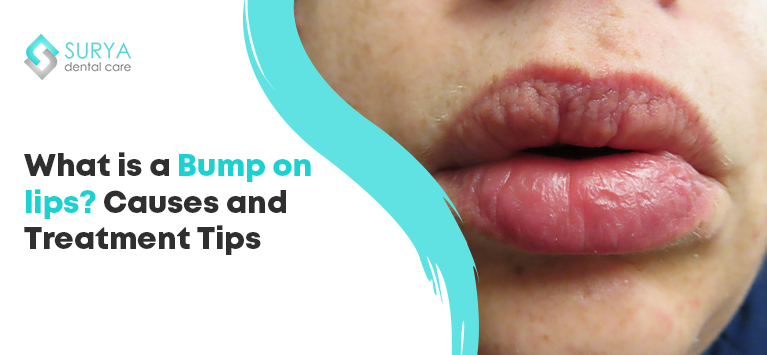Are you concerned by a pesky bump on your lips? If you are, then this blog is for you.
Whether it’s a pimple, white bumps, swollen bumps, or any other type of protrusion on the delicate skin of your lips, this blog will provide you with valuable information on the causes, diagnosis, and treatment methods for such conditions.
What are Bumps on the lip?
It is essential to understand what these bumps on the lips actually are. Bumps over the lips can manifest in various forms and have different underlying causes. Some common types include pimples or acne breakouts specifically occurring on the lip area. Additionally, small white bumps known as Fordyce spots can also be found on the lips and other areas of our body.
Causes of bump on the lips
A swollen bump on the lips can be uncomfortable and concerning. There are several potential causes for this condition, including
Cold sores
Cold sores, also known as fever blisters, are caused by the herpes simplex virus (HSV). They typically appear as small, fluid-filled blisters that can cause pain and swelling on or around the lips.
Allergic reaction
An allergic reaction to certain substances like lip care products, cosmetics, or food can lead to swollen bumps on the lips. These reactions may manifest as redness, itching, and inflammation.
Canker sores
Unlike cold sores, canker sores are not caused by viruses. They are small ulcers that develop inside the mouth or on the lips due to various factors such as stress, injury from biting your lip, or certain foods.
Mucocele
A mucocele is a harmless yet bothersome cyst that forms when a salivary gland duct gets blocked or damaged. This blockage results in a fluid-filled bump on lip that may resemble a pimple.
Angioedema
Angioedema refers to swelling that occurs beneath the skin’s surface and commonly affects areas like the lips and eyes. It can be triggered by an allergic reaction or other underlying conditions such as medications or hereditary factors.
Trauma or injury
Accidental injuries to the lip region through falls, sports activities, or even being hit may cause bumps to form due to tissue inflammation and blood vessel damage.
Have you ever wondered how to differentiate between pimple breakouts and other lip conditions?
- One common lip condition that often gets mistaken for pimples is Fordyce spots. Fordyce spots are small, painless bump on the lip or around the mouth caused by enlarged oil glands. Unlike pimples, Fordyce spots are not associated with inflammation or infection.
- To identify a pimple breakout, look for redness, swelling, and pus-filled bumps. Pimples can occur anywhere on the face but are commonly found around the mouth area as well. In contrast, Fordyce spots appear as tiny, pale yellow or white dots.
- If you notice redness and inflammation along with pain or tenderness, it is likely a pimple breakout. However, if you spot small bumps without any accompanying symptoms or discomfort, you may be dealing with Fordyce spots.
Treatment Options for Bumps on the Lips
Several different types of bumps appear on the lips, and each may require a specific treatment approach. So, get to know the various types of lip bumps and the treatment options available for each.
White Pimple on Lips
- Apply a warm compress to the affected area several times a day to reduce inflammation and promote healing.
- Avoid picking or popping the pimple, as this can lead to infection and scarring.
- Over-the-counter topical treatments containing benzoyl peroxide or salicylic acid can be used to help clear up the pimple.
- Keep the lips moisturized with a lip balm that contains soothing ingredients such as aloe vera or chamomile.
Fever Blister (Cold Sore)
- Apply an over-the-counter antiviral cream, such as docosanol or acyclovir, at the first sign of a fever blister.
- Take oral antiviral medications prescribed by a healthcare professional to shorten the duration of an outbreak and reduce its severity.
- Avoid touching or picking at fever blisters to prevent the spreading of the virus and worsening symptoms.
- Protect your lips from sun exposure by using lip balms with SPF and wearing a hat when outdoors.
Mucocele
- Small mucoceles often resolve on their own without intervention.
- If persistent and lost for more than two weeks. Then, surgical excision may be necessary to remove larger mucoceles.
Bottom Line
Bumps on the lips usually pose little threat and will disappear on their own. It is important to note that bumps on the lips can have various causes, including viral infections, allergic reactions, or skin conditions. Suppose they persist for more than two weeks despite home treatments. In that case, it is advisable to consult a healthcare professional for proper diagnosis and further treatment options tailored to your specific condition.



